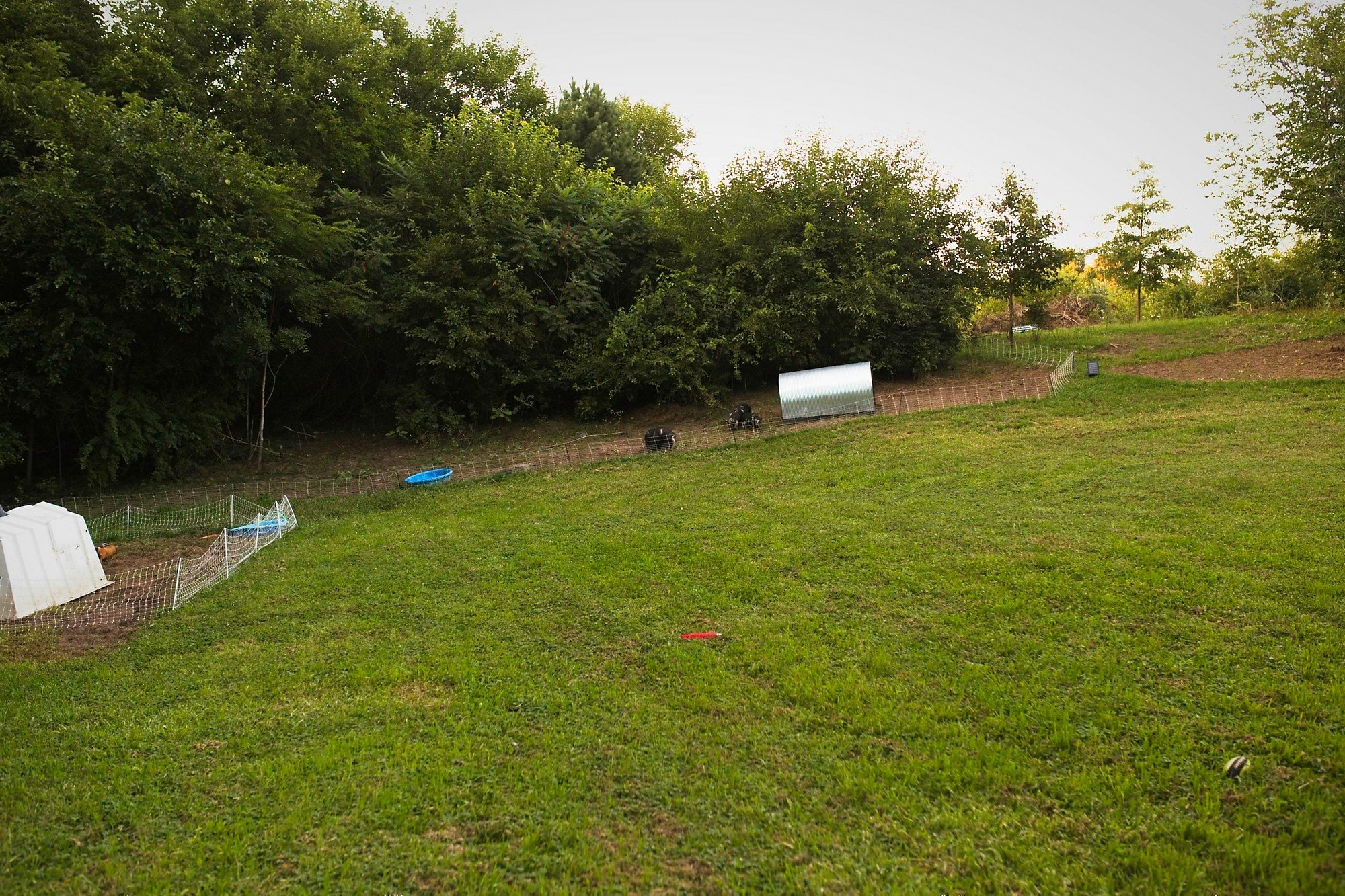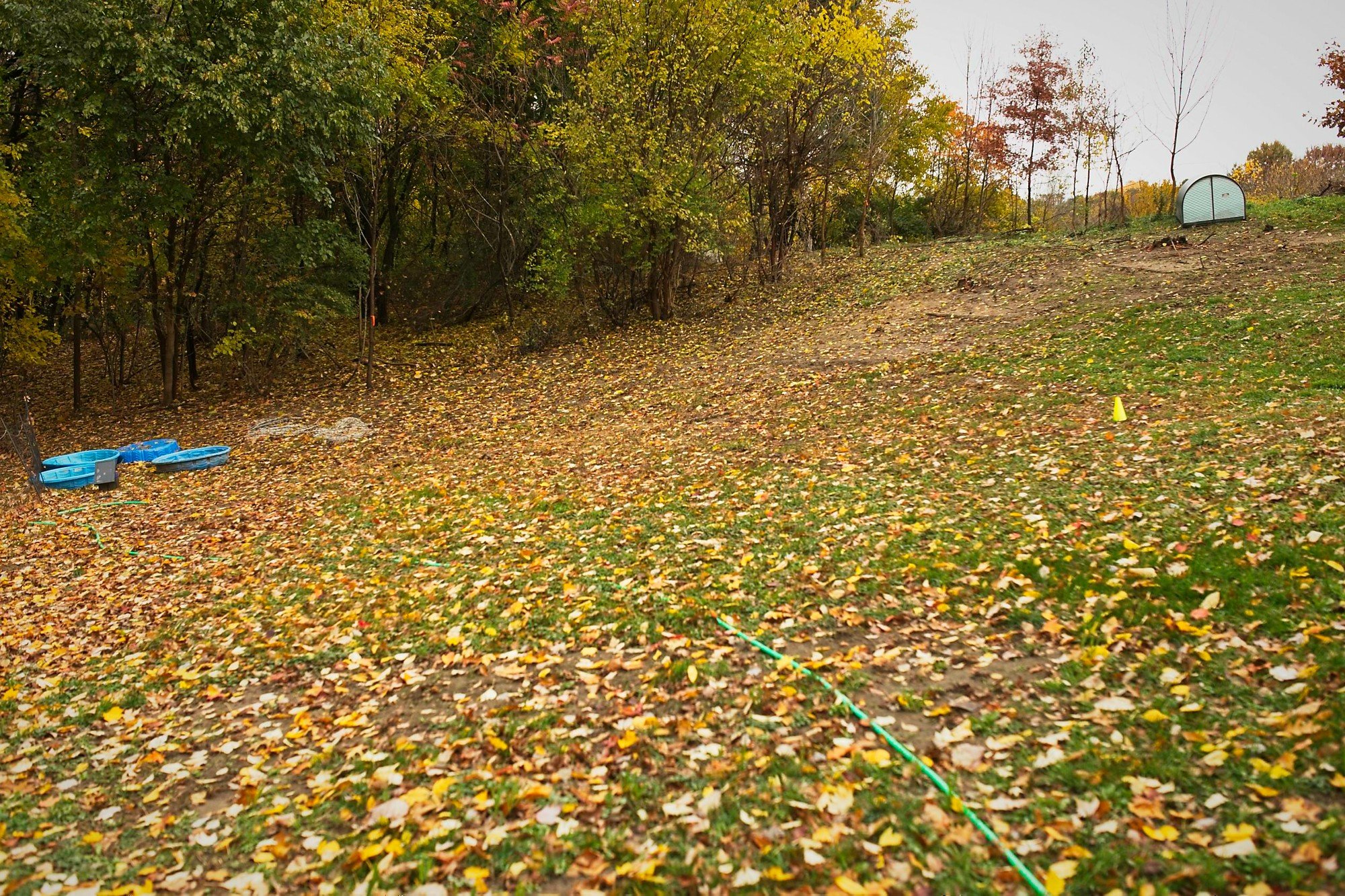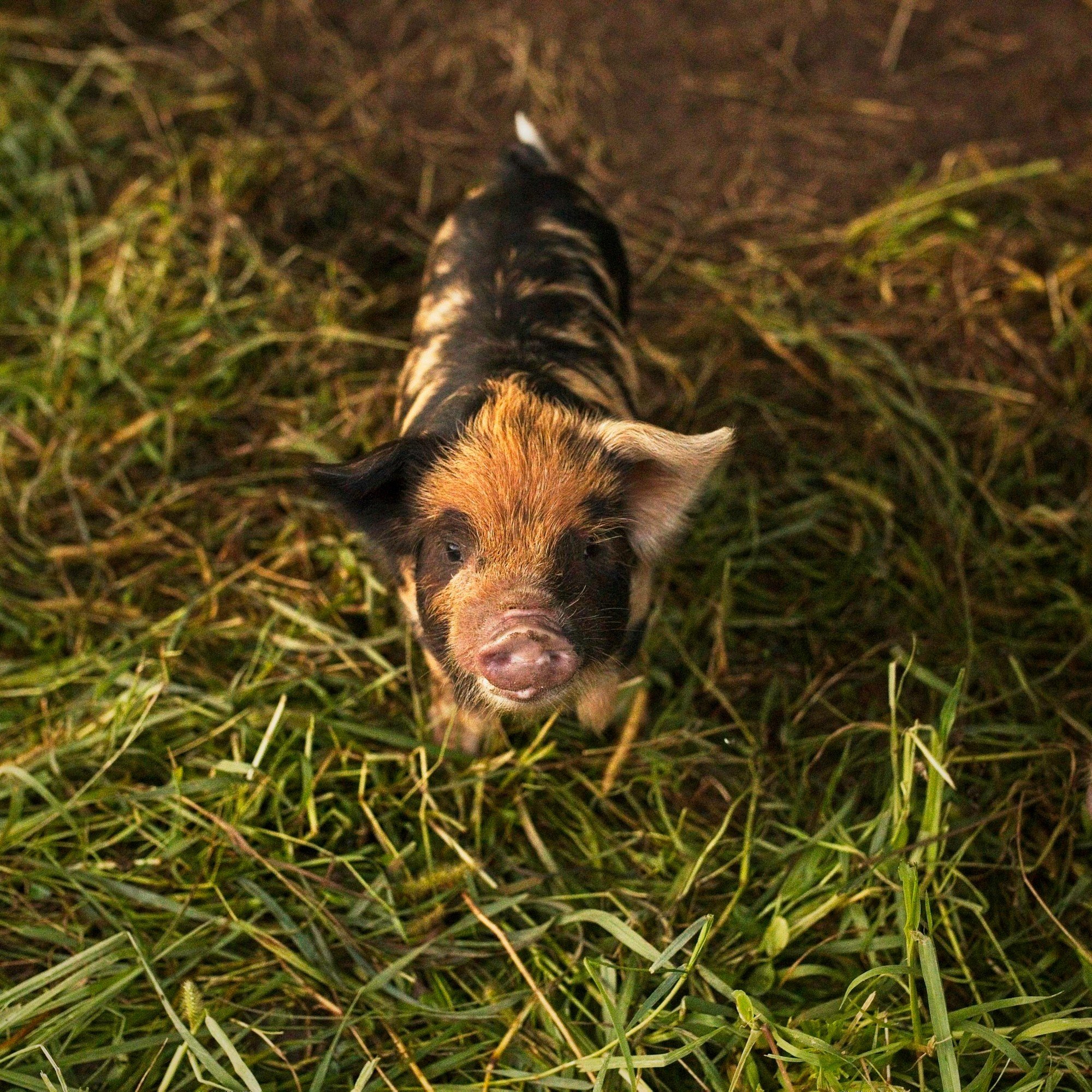How We Raise Kunekune Pigs - Part 1 - Rotational Grazing
Want to be the first to know about available Kunekune Piglets?
We have been raising Kunekune pigs for 5 years now and they have been a complete delight to raise. Before we get into the nitty gritty of how exactly we do things at our farm lets cover a few things first…. This is by no means me saying this is the “best way”, “the only way”, or even “this is how you should raise pigs”. I have some very well thought out reasons behind why we choose to do things the way we do. Not everybody has those reasons and therefore do not need to and possibly should not raise pigs the way we do. Some people do have similar reasons and will likely find the information I share very valuable and worthy of a read. I struggle with people representing themselves as experts on a topic when they are very much new to a topic. Five years is not long enough to be an expert…..and that is truly how I view myself, still somewhat new to raising pigs. We will always be learning more and more and I have the personality of someone that will always feel like there is so much more to learn. However we have learned some lessons and techniques that could help others and that is why I want to share how we raise our pigs here. So let's get on with it!!
First a couple of concepts, regenerative agriculture and rotational grazing. This is not an exhaustive explanation of these topics but a general overview that gives a bit of detail on why we do certain things. After that we will cover how we rotational graze our pigs.
What is regenerative agriculture?
You can search the Internet and find several different examples of what regenerative agriculture is and I think it tends to mean different things for different people. For me regenerative agriculture means using farming practices that leave our land in better condition than when we started. Meaning more and healthier topsoil with biological activity and nutrition and more biodiversity of native flora and fauna. There are several different ways you can accomplish this goal. We use rotational grazing as a big component of how we improve our pastures not only for our own animals to be able to gain more nutrition from our pastures but also to improve the biodiversity of our plant species, insects, birds and mammals. There is nothing better than farming and growing our own food while also improving the environment for the animals that are naturally here. Regenerative agriculture practices also makes farming so much more enjoyable.
We have been using regenerative agriculture farming practices to raise our pigs and we do this for several reasons. A few of our main reasons are that our pigs are not tearing up our pasture, their poop and pee nutrients have the appropriate time to be utilized by our pastures, they get to harvest their own food and nutrients from our pastures, and it is also beneficial for managing parasites. Other components of regenerative agriculture that we have used over the years and still currently use include cover cropping, no till, and multi species grazing. Multi species grazing means having many species use the same piece of land one after another or with each other. This can be beneficial for utilizing the whole pasture because different species enjoy different vegetation/bugs and also it is helpful for parasite management. The thing that’s really interesting about all these terms that are used to describe different farming methods or components of farming methods is a lot of times they all work together…. So holistic parasite management works with regenerative agriculture because you typically use rotational grazing and multi species grazing for both.
There’s a beautiful web that is formed when you look at nature and how things are done naturally. I try as often as possible to mimic that instead of dominating it. I learned a long time ago that anything living is not a black box, you cannot put one thing in and get one thing out. Anything living is full of other living networks. One change or input can put in motion 20 more changes, and then those can put in motion 20 more changes and so on. Using regenerative agricultural practices allows me to see this everyday. Putting pigs in an overgrown autumn olive field will not result in just one outcome. So many beautiful things can result from that decision like breaking down of the autumn olive to allow more sunlight and then for grasses to germinate and grow, and then more birds to eat the grass seeds and on and on.
What is rotational grazing?
Rotational grazing is allowing a species of animal to stay in one location sometimes called a paddock for a certain amount of time and then moved to another paddock. Your reasoning behind rotational grazing will determine how long you allow those animals to stay there and how big of an area you need to give them.
Many people rotational graze to improve pastures. When an animal consumes the plants matter in an area and urinates and poops in that area you should move them along to the next pasture so they are not eating in the same area that they are pooping and peeing. This can help with parasites and also allows those nutrients from their urine and their poop to be utilized by the plant matter as it regrows. Rotational grazing gives the vegetation a period of time to regrow without animal pressure.
You can also use rotational grazing to “clear out” a paddock, shrubby, or wood lot. When clearing out is your goal you are likely to leave an animal in that paddock for a longer period of time (2-3 weeks) to put more animal pressure on the vegetation to weaken it and eventually kill. At our previous property we were improving/maintaining pasture and that warranted quick moves of 3-4 days. At our current property (picture below) we are clearing out shrubby and overgrown pasture that is covered in moss. So we are doing slower moves.
The type of paddock and the type of animal will change how long they should stay there for example if you are dealing with a pasture and ruminants you tend to move them along quicker. For one they consume the plant matter quicker and tend to be more affected by parasites. If you are talking about a wooded lot that you are trying to clear out and you are using pigs, you tend to leave those in their paddock for a bit longer so that they can consume the shrubby material while also breaking it down by laying on it.
How do we rotational graze Kunekune Pigs?
Over the years we have been perfecting our moving of the pigs and it started out with limited resources and one set of fencing. We would start by getting the outline of the new paddock cleared and ready for the fencing, pick up the food and water bowls and move them to the new paddock area. Then we would open the pigs current paddock area up and feed the pigs in their new spot. We would quickly pick up their fencing and move it to the new paddock, fencing them in. While this way was frugal, it led to some frustrations and marriage counseling. Just kidding, our marriage made it through the pig moves just fine! But it was always a bit nerve racking! We would need to be so quick about it and get the new fencing set up before they were done eating or be quick about giving them extra food to keep them busy. We did it that way for probably two years until we finally got additional fencing. Now we set up the new fencing first then move their food bowls over and feed them in their new paddock with the fencing already set up. Below is an example of how we set up the new paddock right next to the current paddock making the move to the new paddock fairly smooth and easy.
Our pigs, when trained from an early on, will follow a food bucket pretty much anywhere. We start this early on by saying the same words (“Pig pig pig”) and making the same sound (hit the side of the bucket with the scoop) every single time we feed them. They will know when you say those words and make that sound “hey I’m gonna be fed!!” The more pigs you have the harder it is to move a group at one time and not have any strays venture off so we try to keep it to smaller groups when moving them. If we do have to move them a really long way, say several 100 feet, or we have a larger group with a bunch of newbies, we will kind of set up a corral of fencing. We don’t usually electrify that fencing because they are so used to seeing it and not wanting to touch it, it is more of just a deterrent. We have never lost a pig or had a pig run off our property during a paddock move and we live on the wild side (or irresponsible side) with no permanent property fencing. However, some overzealous pigs just start sprinting like dang cheetahs for their new paddock and food bowl so we are always on alert and ready to run faster than them while simultaneously yelling “PIG PIG PIG!!!” and hitting a very heavy food bucket with a plastic scoop. It all keeps us young and on our toes!
As stated above, at our current property we are using the pigs to clear the understory of woody shrubs and vegetation so that we can more easily tag trees we want to keep and get the tractor in to help clear out the smaller trees. I don't actually think bringing in a tractor to push down small shrubs and trees is the best way to do this due to soil disturbance but we want this done quicker. We need more pasture for the pigs, geese, and goats. So everybody has to weigh the pros and cons to each decision. Also the soil fertility/topsoil at this property is not much to write home about so we are not really ruining anything. A large portion of the ‘pasture’ is so shrubby that nothing is growing except moss. Which is a sign of low light and fertility. Below is an example of what the pigs and the tractor were capable of in a season. Use the oak trees at the top of the hill in picture #1 and #5 and toward the middle of picture #3 and #6 as a reference in the rest.







That is how we rotationally graze our pigs and a bit about why we do it as well. Please look for the next parts of how we raise Kunekune pigs. Part 2 is to follow and will cover the following topics and feel free to clink the link to skip to those topics!
Do they actually graze and do they root?
How many acres/space do they need?
What to feed them and how much?
And if you want to learn more about our Kunekune breeding stock and available piglets click here!





